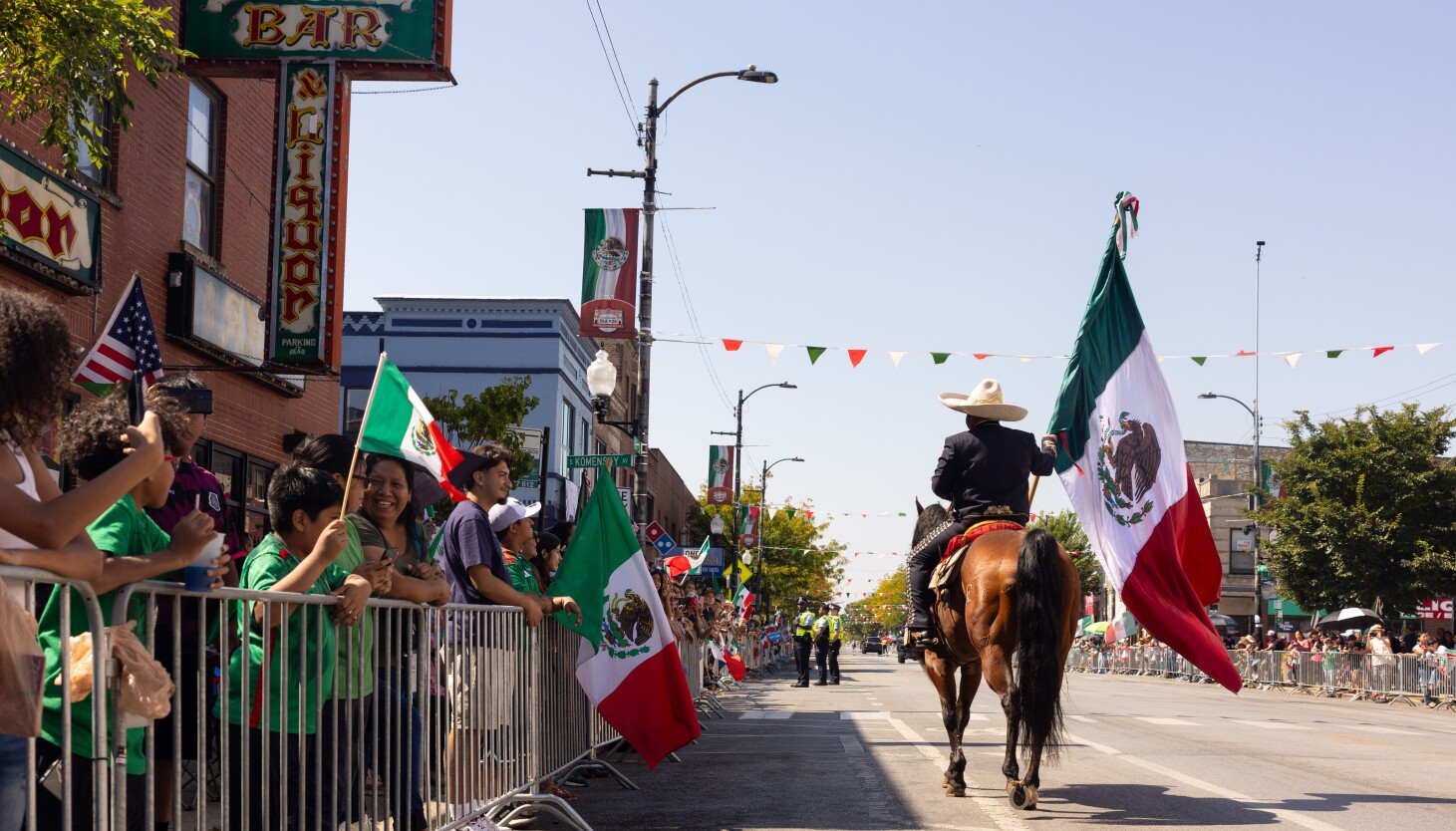This week was at least the second time in the past century that the federal government rolled out heightened immigration enforcement on Mexican Independence Day in Chicago.
Seven decades ago, former President Dwight D. Eisenhower’s administration deployed a sweeping initiative to arrest and deport Mexican nationals who lacked legal status in the United States.
The operation in 1954 — the name of which used a racial slur against Mexicans — focused on border areas in Texas and California, but the federal government also used Mexican Independence Day in Chicago to start immigration enforcement to garner media attention and create fear in the community, said Lilia Fernández, a history professor at the University of Illinois Chicago.
“These campaigns have usually been very intentionally and deliberately planned to coincide with moments of a lot of public celebrations or gatherings or times when the community will be very visible,” said Fernández, whose book, “Brown in the Windy City: Mexicans and Puerto Ricans in Postwar Chicago,” details migration in the city during and after World War II.
The enforcement was planned by Eisenhower’s administration and the former Immigration and Naturalization Service. Just like Tuesday’s escalation that saw Border Patrol chief Gregory Bovino arrive in the Chicago area, the 1954 operation was led by the head of Border Patrol at the time.
That campaign 71 years ago happened during a time of economic insecurity. It’s estimated that 1 million people across the country were either deported or left the United States, including U.S. citizens.
It’s not yet clear how many people have been arrested for deportation by U.S. Immigration and Customs Enforcement in the Chicago area this week. One man, Silverio Villegas González, was shot to death by ICE agents Friday in northwest suburban Franklin Park.
The increased ICE activity on Mexican Independence Day feels significant because it’s usually a joyous time in the Chicago area, said Elena Gonzales, curator of civic engagement and social justice for the Chicago History Museum. Large celebrations typically start a week before Mexican Independence Day and feature many people hanging flags from their cars around the city.
“It’s an effort to strike fear into the hearts of local communities, and to attack our culture and our traditions and the things that hold us together and bring us together,” Gonzales said.
Gonzales is the curator of the upcoming “Aquí en Chicago” exhibit at the Chicago History Museum, which will delve into the history of Latino communities in the city.
Gonzales said there are other parallels between past and present campaigns for mass deportations — in particular the militarized appearance of the ICE officers making arrests. She said it’s important to keep an eye on who is arrested given that U.S. citizens were detained in past campaigns from the 1950s and 1960s and again on Tuesday in Elgin.
“I think this is a very important time to think about solidarity and staying strong together and taking care of each other,” Gonzales said.
Fernández said the names used for the campaigns — like “Operation Midway Blitz” — are also meant to militarize immigration enforcement and show supporters that the government is seriously tackling the issue.
“To show strength and power, perhaps, again to intimidate and promote fear in communities,” she said.
While fewer immigrants are coming from Mexico these days, they have stronger ties to Chicago and the United States than past generations because many have lived here without legal status for decades, Fernández said.
“Many of them, I would say, are much less willing to just give up and go back to their country of origin — to a place that maybe they haven’t been to in decades or that they no longer know,” Fernández said.
She added that it’s important to understand past historical moments and how communities have mobilized in the past.
“These kinds of actions and operations, they’ve caused a lot of damage and harm to communities and families in the past,” Fernández said. “But many people have also been very resilient and resisted and fought back against these sorts of policies.”
